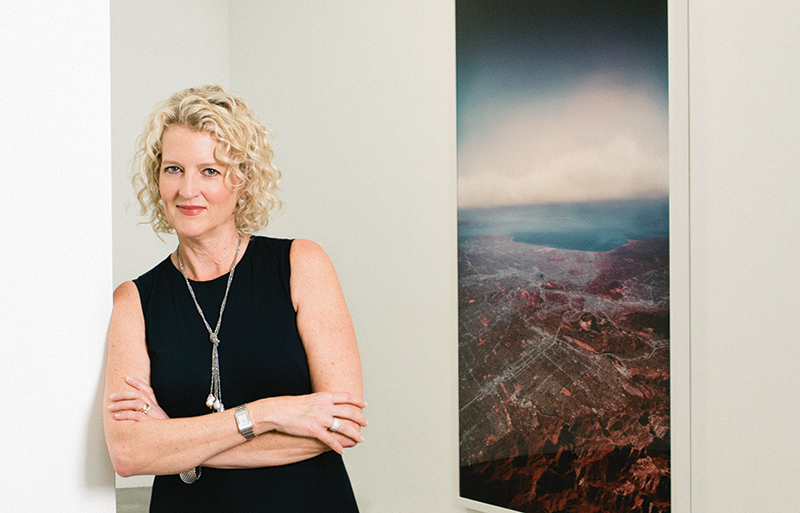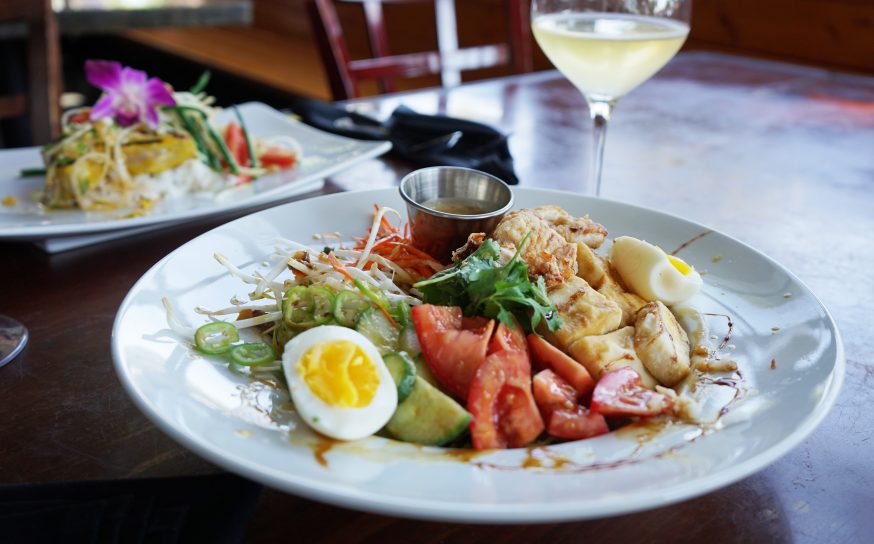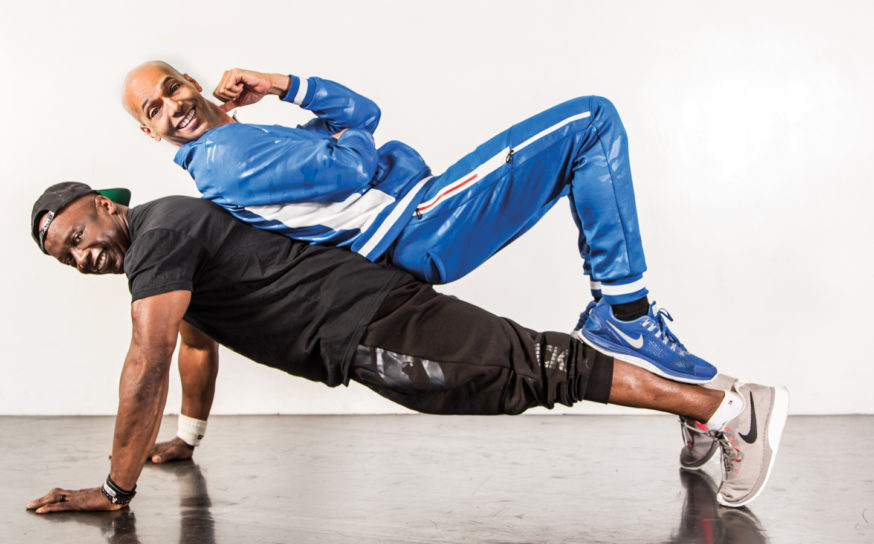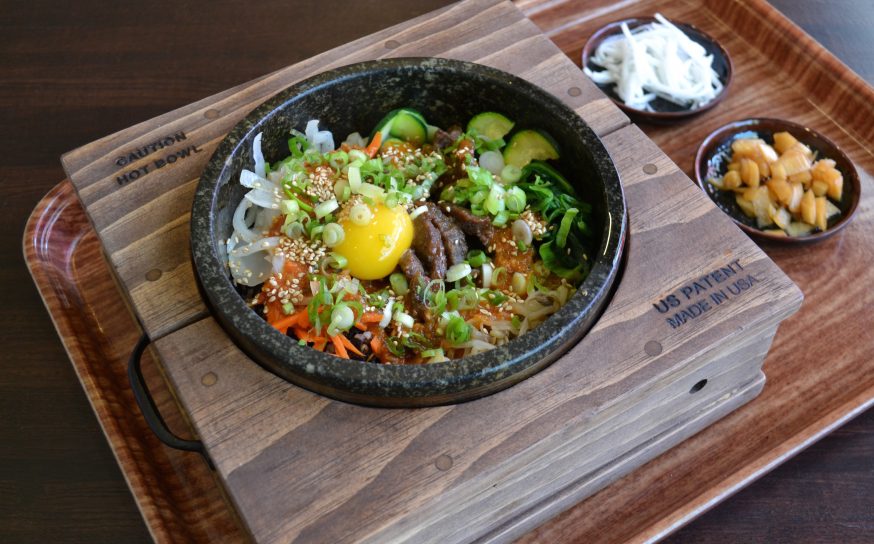
The Advisor
Drawing a “fine” line with art guru and consultant Victoria Burns
-
CategoryPeople
“One eye sees; the other feels,” said Swiss-German painter Paul Klee describing art. For art advisor Victoria Burns, this delicate duality applies not only to her personal tastes but also to the satisfaction of her fine art-collecting clients.
Victoria spent most of her adult life in Chicago, where she received a bachelor’s degree in art history at Northwestern University. Surrounded by the rich architecture and prominent museums of the Windy City, she began her career there as an adviser.
In recent years, she moved west and now bases her business in Los Angeles. We caught up with Victoria to discuss the booming LA arts scene, her own passion for art and how she helps clients find theirs.
What artist are you currently finding captivating?
Ai Weiwei, who was arrested and has been detained in China for producing his works of art, which protest his government’s stance on democracy and human rights. They are powerful objects: beautiful, thought-provoking and made out of interesting, culturally relevant materials such as tea, jade, local woods, bicycles.
Any others?
Maurizio Cattelan is an Italian artist who makes shocking, satirical sculptures targeting social systems and the art world. Jim Hodges, an American artist producing exquisitely beautiful objects with emotional overtones—he uses materials from everyday life, transforming them into magical objects.
Also Palestinian artist Mona Hatoum, whose work initially provokes a physical response quickly followed by psychological or emotional connection to the work. For example, she created a carpet constructed of stick pins. When you first see the work, you sense beauty and sensuality, but when you come closer, you realize how violent it would be to step on.
Let’s talk about your job. Walk us through a typical interaction with a new client.
First I visit with them in their home or office, which tells me a lot. I can see their environment, and we have a discussion about what art they already know and like … and more important, why they are interested in collecting. I usually arrive with a huge stack of books to get the conversation going about what’s out there now and which direction I might take them.
I focus our discussion on a few ideas: Do they prefer a certain medium such as photography or painting, do they prefer figurative vs. abstract, are they political, do they travel and think about global issues? Understanding their answers allows me to be more effective.
How does the purchasing process work?
I typically take the client to galleries and art fairs both in Los Angeles and around the world. Once we’ve found an object that they want to acquire, I’m able to use my relationships with galleries and other art world connections to negotiate a favorable discount, which I pass on to the client.
What specifically do you look for in fine art?
I look for artists whose work fits into the trajectory of art history but somehow challenges what we already know. I also appreciate it if a work is enigmatic, so that there is always something new to be discovered.
What is your own collection like?
My husband and I started collecting in the ‘90s primarily, when photography was particularly hot and accessible. Many of our images are both beautiful and also provocative with a second layer of meaning. For example, the Ori Gersht is an image of an all-white, overexposed, 600-year-old olive tree on the border of Israel and Palestine. It’s called “Ghost” and references death but also a peace offering.
In a perfect world, what do you hope for in a new client?
Open-mindedness. While I have to work with a client’s taste, having a client who is open to multiple types of art (photography, painting, sculpture, video) or themes within art (nature, war, portraits, etc.) helps me build the most interesting and valuable collection I can for them.
How would you describe the state of the LA art scene?
The LA art world is on fire! Many artists, galleries, curators and collectors have moved here from New York and elsewhere, so LA has developed into a truly international art scene. Artists love living here. It is a hotbed for creation and innovation with the movie industry, great universities and art schools, fabulous museums and also the rise of the “Silicon Beach” tech scene.
Any parting advice you can give to a Valley resident interested in upping their art game?
Be open-minded, see lots of art in galleries and museums to educate your eye, read and learn about those artists you like. Learn the basics of art history if you can so you can contextualize new work, which often refers to something made in the past. Make time for it. Like any other hobby or investment project, knowledge is cumulative.
Victoria’s nonprofit arts hit list:
Hammer Museum K.A.M.P. (Kids Art Museum Project)
So fantastic. Everyone with little children should head up on the weekends, where professional artists work with children to create projects. Painters, sculptors, architects and creative types of all kinds lead inventive, hands-on workshops in the carefree atmosphere of the Hammer Museum courtyard.
LAXART
An independent, nonprofit space that produces experimental exhibitions and public art initiatives, offers the public access to a new generation of artists and curators, supports both risk and dialogue, and produces new work for new audiences. Their events are happenings and are often open to the public.
LAND (Los Angeles Nomadic Division)
A nonprofit organization founded in 2009 committed to curating site-specific public art exhibitions in Los Angeles and beyond. LAND believes that everyone deserves the opportunity to experience innovative, contemporary art in their day-to-day lives. In turn, artists deserve the opportunity to realize projects, otherwise unsupported, at unique sites in the public realm.












